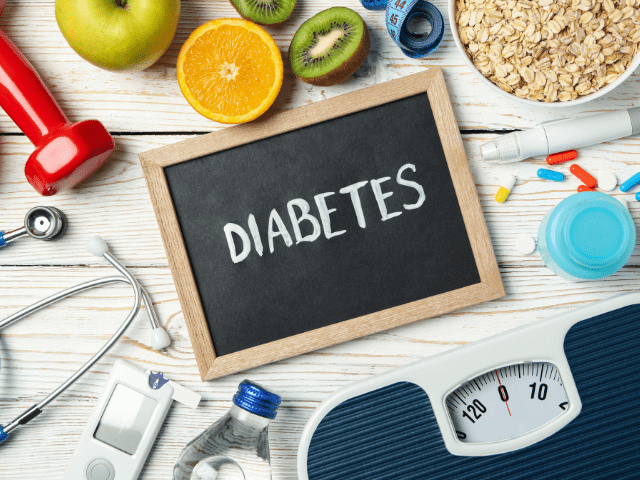
Prediabetes or insulin resistance- a diagnosis characterized by higher-than-normal blood sugar. With prediabetes, the body is struggling to maintain blood sugar levels within a healthy range and has not yet developed into full-blown type 2 diabetes.
I covered what happens in a prediabetic body to cause the condition in a previous article . I also looked at possible symptoms of the condition.
In this article I’m going to look at who is most at risk for developing prediabetes. Read on to find out if you fall into any of these categories. I also write about how to manage, reverse and prevent prediabetes.
It can be difficult to tell if one has developed prediabetes unless it is medically diagnosed. For diagnosing prediabetes, a great marker to check is your haemoglobin A1C.
When sugar enters your bloodstream, it attaches to haemoglobin, a protein in your red blood cells. Everybody has some sugar attached to their haemoglobin, but people with higher blood sugar levels have more. The A1C test measures the percentage of your red blood cells that have sugar-coated haemoglobin over a 3 month period.
A normal A1C level is below 5.7%, a level of 5.7% to 6.4% indicates prediabetes, and a level of 6.5% or more indicates diabetes. Within the 5.7% to 6.4% prediabetes range, the higher your A1C, the greater your risk is for developing Type 2 Diabetes.
However, they can always be on the lookout for certain risk factors which make an individual more prone to prediabetes.
1. Hereditary factors or family history of Type 2 diabetes: Individuals who have an existing family history of Type 2 diabetes are at greater risk of developing prediabetes.
2. Medically overweight individuals: One of the principal risk factors for prediabetes is being overweight. The cells in the body become resistant to insulin if the fatty tissue in the body—particularly inside and between the muscle and the skin around the abdomen (or stubborn belly fat)—is higher than normal. Moreover, those diagnosed with high cholesterol or triglycerides, high LDL and low HDL are equally at risk.
3. Sedentary lifestyle: Not being active enough through the day or not getting the required amount of daily exercise increases the risk of prediabetes.
4. Poor sleeping patterns: On average, an adult needs between 7-9 hours of good quality, uninterrupted sleep every night. Frequently compromising on sleep wreaks havoc with the body’s circadian rhythm, increasing the chances of sleep disorders such as insomnia, sleep apnea or narcolepsy over a period of time, thus posing a greater risk for prediabetes. Here are 12 hacks to learn to sleep better
5. Unhealthy eating habits: A heavy intake of foods such as processed meats, processed or refined foods & grains, sweets, sugar-laden beverages, and a lack of fruits, vegetables, nuts, and whole grains can put a person at a higher risk of developing prediabetes.

6. Metabolic Syndrome: The occurrence of certain health conditions, a combination of which can trigger prediabetes, is known as Metabolic Syndrome. For instance, an individual developing three or more of the following conditions is at a greater risk of prediabetes: high blood pressure, high blood sugar levels, a large waist size, high triglycerides and comparatively lower levels of HDL, or the good cholesterol.
7. Frequent smokers: Individuals who smoke frequently are at a greater risk of prediabetes. Smoking incessantly can cause further health complications that might arise from diabetes.
8. Medication: Individuals on certain steroids, HIV medication, or antipsychotics are more likely to be diagnosed with prediabetes.
9. Gestational diabetes: If an expectant mother develops diabetes or gives birth to a child weighing more than nine pounds, the mother and the child are more likely to develop prediabetes.10. Advancing age: Those over the age of 45 years are more susceptible to developing prediabetes, especially individuals with existing cardiovascular disease or hypertension.
Click here to understand how to reverse prediabetes and even prevent it from happening to you.


